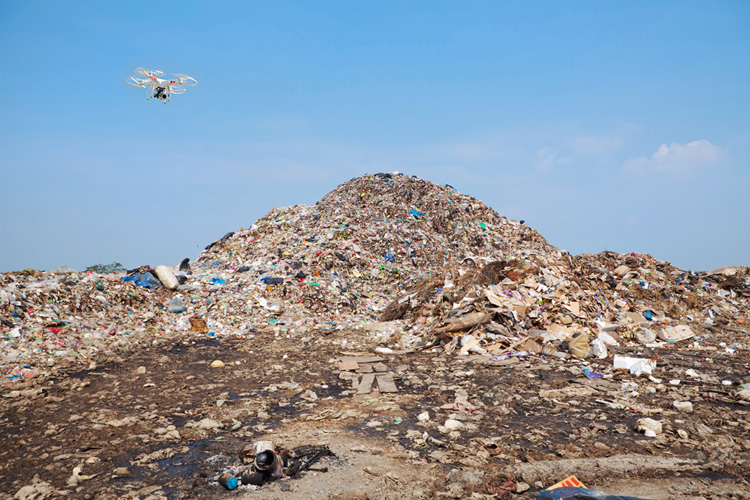
Contents
Introduction
Waste-to-energy (WtE) and biodiversity conservation play crucial roles in landfill reclamation efforts. As the world grapples with increasing waste generation and its environmental consequences, finding sustainable solutions becomes paramount. This article explores the integration of WtE technologies and biodiversity conservation in landfill reclamation projects, highlighting their importance and potential benefits.
Historical Background
The history of WtE and landfill reclamation stems from the need to address growing waste management challenges. Landfills have long been considered as dumping grounds, causing environmental degradation and biodiversity loss. However, with advancements in technology and a growing understanding of ecological restoration, efforts to reclaim landfills while conserving biodiversity have gained momentum.
Key Concepts and Definitions
WtE refers to the conversion of waste materials into usable forms of energy, such as electricity or heat. In the context of landfill reclamation, WtE technologies help manage and utilize waste while minimizing environmental impacts. Biodiversity conservation involves the protection and restoration of ecosystems and their diverse species. Landfill reclamation encompasses the process of transforming a landfill site into a functional and sustainable area. Key terms such as ecological restoration and sustainable waste management are also essential to understanding the concept.
Main Discussion Points
The role of WtE technologies in landfill reclamation and biodiversity conservation
WtE technologies have the potential to significantly contribute to landfill reclamation and biodiversity conservation efforts. These technologies reduce the volume of waste and generate renewable energy. By diverting waste from landfills, WtE technologies decrease the environmental burden while creating opportunities for habitat restoration.
Strategies and techniques for enhancing biodiversity in landfill reclamation projects
Habitat creation and restoration are vital strategies for enhancing biodiversity in landfill reclamation projects. Creating diverse habitats with appropriate soil conditions and vegetation allows for the establishment of ecological niches and supports the return of native species. Incorporating wildlife corridors in reclaimed landfills facilitates the movement of species, promoting genetic diversity and ecological connectivity.
The benefits and challenges of WtE and biodiversity conservation in landfill reclamation
WtE technologies and biodiversity conservation in landfill reclamation offer numerous environmental benefits. They reduce greenhouse gas emissions, promote renewable energy generation, and restore degraded ecosystems. However, challenges such as public perception, regulatory barriers, and potential conflicts between waste management and biodiversity conservation goals need to be addressed for successful implementation.
Case Studies or Examples
Real-world examples serve as valuable sources of inspiration and insights for landfill reclamation projects. Successful projects, such as Freshkills Park in New York City and the Bordo Poniente Landfill in Mexico City, demonstrate the integration of WtE technologies and biodiversity conservation. These projects have achieved significant ecological restoration and sustainable waste management outcomes.
Current Trends or Developments
Recent trends in WtE technologies focus on improving energy efficiency, reducing emissions, and utilizing advanced waste separation techniques. These advancements have the potential to enhance landfill reclamation efforts and biodiversity conservation. Additionally, ongoing research explores the use of novel approaches, such as phytoremediation and bioremediation, to optimize landfill reclamation outcomes.
Challenges or Controversies
Implementing WtE technologies and biodiversity conservation in landfill reclamation projects faces certain challenges and controversies. Public perception and concerns regarding emissions and waste management practices need to be addressed through effective communication and transparency. Balancing economic interests, regulatory frameworks, and ecological restoration goals can also lead to debates and differing viewpoints.
Future Outlook
The future of WtE and biodiversity conservation in landfill reclamation holds immense potential. Advancements in technology, coupled with evolving waste management practices, can further integrate these concepts. Emphasizing research and development can help identify innovative solutions and address existing challenges, leading to more sustainable landfill reclamation projects worldwide.
Conclusion
The integration of WtE technologies and biodiversity conservation in landfill reclamation presents a promising approach to address waste management challenges while restoring ecosystems. The significance of these concepts lies in their ability to reduce environmental impacts, generate renewable energy, and promote biodiversity. It is crucial to foster continued exploration and research to ensure the successful implementation of this integrated approach.